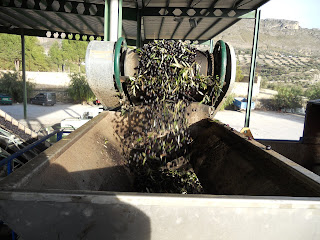One of the coolest things I’ve experienced in Spain thus far has been my ability to differentiate between the scores of Spanish accents spoken. Not only do the autonomous communities speak different from each other, like the north of the US compared to the south, but the provinces that make them up each claim that they have the most beautiful accent. The biggest variation I’ve experienced has been in Andalucía.
Spain’s southern region is what I know best. The accent, Andaluz, is famous in Spain. It is harsh, hard to understand and has been called “uneducated.” In addition, the constant “eating” of words leaves many foreigners and Spaniards alike confused. My host family in Santander once told me that they don’t speak nor understand Andaluz. The biggest advantage of learning it, however, is best stated by those who live there: once you speak it, you will understand all the Spanish dialects.
The most common features of Andaluz are the “s” and “j” that don’t exist in the pronunciation. In addition, “eating” the last half of the word must be healthy for the body because everyone seems to do it here. As a foreigner living in Sevilla—one of Andalusia’s eight provinces—this can be a bit tough to understand at times. On the other hand Andaluz can be easy to speak. Why? Well, all you have to do is eat your words and not pronounce the “j” and “s” and you’ll be on your way to Andalusian perfection; quite the opposite of what I learned in Spanish class.
People from Andalucía love to combine words also, if eating and not pronouncing them weren’t enough. For example, pues no (well, no) is combined to form pono. Para el coche (let's hit the road) becomes pal coche while the word todo (all) can pretty much be added to anything, such as tobien (todo bien, all good). To add more fuel to the fire, Andalusians like to omit words from the sentence. The words te he dicho (I’ve told you) are never said like the way they are read. The “he” is taken out to form te dicho. In addition and apart from the non-pronunciation of “j” and “s,” past participles that end in ado and ido are changed as well. The “d” in ado and ido is thrown out the window to form ao (pronounced “ow” in English) and io. Examples include hablao from the past participle hablado and pedio from the participle pedido. These certainly aren't the only exceptions, as the words nada and todo commonly lose the their last two letters, becoming to (pronounced "toe") and na (nah). Put this all together and you have one crazy dialect.
On top of all this, the Andalusian lingo seems to get weirder, especially in Sevilla. In the Andalusian capital, there are four accents that I usually here on the street. The first is the “general” Andaluz, characterized by the normal diet of words eaten, lack of pronunciation and Spain’s famous “th” sounding “z” (thervetha). The second, third and fourth all have characteristics of the first accent but begin to branch off with the letters “z,” “ch” and “s,” respectively.
In the second, the “z” is uttered as an “s” sound (servesa), a sharp break from typical Spain Spanish. In a certain sense, due to the lack of the “th” sound, it’s similar to Latin American Spanish. In this type, the “s” sounding “z” prevails and the “th” sounding “z” seems to fade away. What’s lost in the latter is quickly made up for with the third type of accent: the “sh” sounding “ch”.
Keep in mind that the “sh” sound, or more clearly the “sh” as written, is not supposed to exist in Spanish. The usual way of pronouncing “ch” in Spanish is equivalent to its English counterpart, but not in some areas of southern Spain. Just as they say English is the language of exceptions, I say Andaluz is the exception of Spanish. In the third type, the “ch” in derecho (law) now becomes “sh,” which is pronounced as deresho. The same goes for the word chico: shico. Where the second type seems to “lose” some of their Spanish accent—by not pronouncing the “z” as “th”—the fourth seems to overcompensate. In this type, the “s,” just like the “z”, is pronounced as a “th.” Some examples include cosa (thing) which, as characteristic of this type, is articulated as cotha.
There certainly are many variations to the four accents I’ve listed above. In fact, some natives use a combination of the four to create their own. Consequently, words can be created among natives of a certain village that people from the bordering towns may not know. You can read about this in a book, or try to understand what I wrote in the post, but the ultimate way of fully grasping the concept is immersion in another country.
This might be a tough read if you don't know spanish, just to let you know.

























